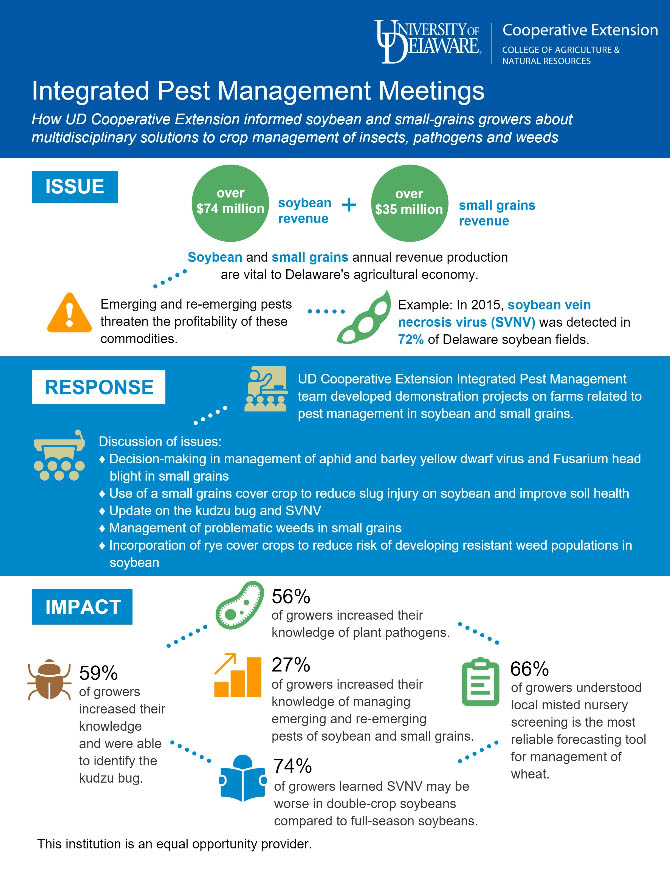
Integrated Pest Management Meetings

ISSUE
Soybean and small grains (wheat and barley) production are vital to Delaware’s agricultural economy, with annual revenues estimated at $74,773,000 and $35,052,333 respectively. Farmers are challenged with managing emerging and re-emerging pests that threaten the profitability of these important commodities. An example of an emerging pest is soybean vein necrosis virus (SVNV). In 2011, SVNV was detected in Delaware. In 2015, 72% of the soybean fields surveyed had detectable levels of the disease.
RESPONSE
The UD Cooperative Extension Integrated Pest Management (EIPM) team developed demonstration projects on farms related to pest management in soybean and small grains. UD Cooperative Extension demonstration projects took a multi- disciplinary approach to pest management in small grains and soybean; they addressed insect, pathogen and weed management. Discussion of issues included:
- Decision-making in management of aphid and barley yellow dwarf virus and Fusarium head blight in small grains
- Decision-making in management of wheat by using disease forecasting tools and variety selection based on misted nursery screening results
- Use of a small grains cover crop to reduce slug injury on soybean and improve soil health
- Update on the kudzu bug, a new soybean pest of soybean recently detected in Delaware
- Update on soybean vein necrosis virus (SVNV)
- Management of problematic weeds in small grains
- Incorporation of rye cover crops to reduce the risk of developing resistant weed populations in soybean
IMPACT
Based on pre- and post-meeting evaluations:
- 27% of growers increased their knowledge of managing emerging and re-emerging pests of soybean and small grains
- 14% of growers increased their knowledge of insect pest management
- 56% of growers increased their knowledge of plant pathogens
- 59% of growers increased their knowledge of and were able to identify the kudzu bug
- 74% of growers learned SVNV may be worse in double-crop soybeans compared to full-season soybeans in Delaware
- 66% of growers understood that the most reliable source when selecting wheat varieties with resistance to Fusarium head blight is local misted nursery screening
- 10% of growers understood that the weed-control benefits from cereal rye cover crop before soybeans depend on how the rye is managed
